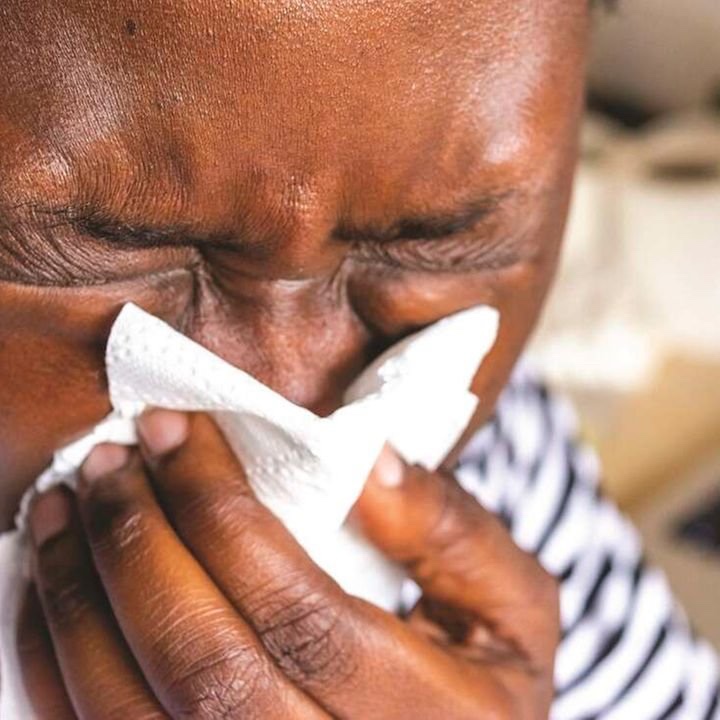The corridors of hospitals around the country are full of mothers with children sneezing, coughing and showing high fever, the Nation has learnt.
Surveillance results from the Kenya Medical Research Institute (Kemri) and the Centre for Global Health Research in Kisumu show that there is an outbreak of influenza A.
The survey, done between September and November, revealed an outbreak of the flu in schoolchildren and in the general population.
Of 36 samples collected, four were positive of influenza A, while the others showed mild symptoms of the virus.
“Last month we had a high number of schoolchildren presenting with flu and high fevers, and sore throats. We really wanted to understand what this was all about,” said Fredrick Oluoch, director of public health in Kisumu County.
The county contacted Kemri to conduct surveillance to find out whether it was Covid-19 or just the flu.
The samples were collected from schoolchildren between the ages three and 14.
The four positive cases were from Ahero, Muhoroni, Kisumu Central and Siaya County.
“This means that the virus has been circulating in the population and children could be spreading it to adults,” Mr Oluoch said.
Coughing and sneezing
The survey findings were supported by paediatricians, who said they have seen an increase in the number of children with the same symptoms.
Dr Walter Otieno, a leading paediatrician, said he sees about 20 children with coughs, sneezing, sore throat and high fever who need to be admitted to hospital.
Last week alone, he admitted about four children.
“Though it is also common in adults, it is more severe in children and I am worried that this is becoming severe,” Dr Otieno said.
Gertrude’s Children’s Hospital in Donholm, Nairobi, has in the past month admitted over 100 children with the same symptoms, many cases severe.
“You find that this is spreading so much in a family setup. Like today alone (Tuesday), I have seen 18 children, a pair each with the same symptoms. Others are presenting with severe headache and fevers,” said a doctor, who sought anonymity because he is not allowed to give information to the media.
Influenza or flu is an infectious respiratory disease caused by viruses that affect the nose, throat and sometimes lungs. Viral infections can be deadly, especially in high-risk groups.
As the weather gets colder, cases of influenza start to increase. This is referred to as the “flu season”.
Research shows cold weather generally worsens upper respiratory tract infections. Experts have warned that Kenyans should prepare themselves for one of the worst seasons of such infections.
The flu virus is transmitted primarily through drops of respiratory infections by infected people, the World Health Organisation (WHO) says. Influenza occurs worldwide, with an annual global rate of attack estimated at five to 10 percent in adults and 20 to 30 per cent in children.
Treatment of influenza
It spreads rapidly around the world during epidemics or pandemics and imposes a huge economic burden.
While it is estimated that one million people die from the disease worldwide, a study published in 2013 noted that there is little data for sub-Saharan Africa and monitoring of the disease is poor.
The WHO, in its Global Influenza Strategy 2019-2030 published earlier this year, said another global influenza pandemic was inevitable, and would carry a massive economic burden of up to $500 billion.
“Therefore, better tools for the prevention, detection, control, and treatment of influenza are needed and both global and national readiness for these threats is important,” the agency said.
Three types of influenza viruses (A, B and C) are prevalent worldwide and affect a significant number of children and adults each year.
The influenza virus infection can range from a mild form that quickly clears off to an intense, highly contagious, life-threatening epidemic. Some strains, such as the avian flu, are transmitted by animals.
Influenza virus A, which also circulates in birds and can move between species, is responsible for most flu infections and causes the deadliest pandemics including the 1918-19 Spanish Flu that killed as many as 100 million people.
It is highly contagious. When a person with the flu coughs or sneezes, droplets can enter another person’s nose or mouth, transmitting the illness.
According to the US Centres for Disease Control and Prevention (CDC), flu viruses can infect others from up to six feet away.
Sometimes, influenza A symptoms may resolve on their own. People who are at high risk for flu complications include those 65 years old and above and those with weakened immune systems. BY DAILY NATION
There's no story that cannot be told. We cover the stories that others don't want to be told, we bring you all the news you need. If you have tips, exposes or any story you need to be told bluntly and all queries write to us [email protected] also find us on Telegram

